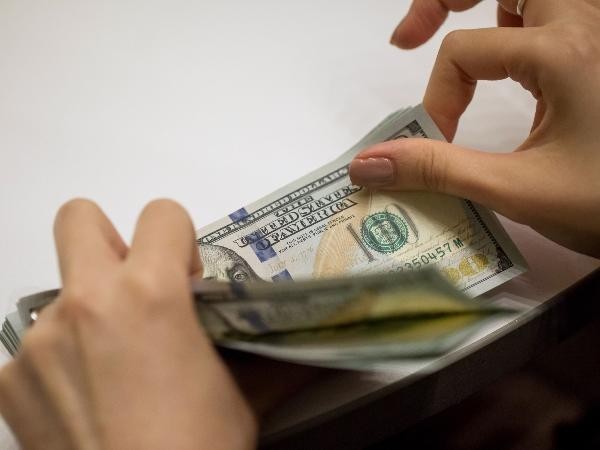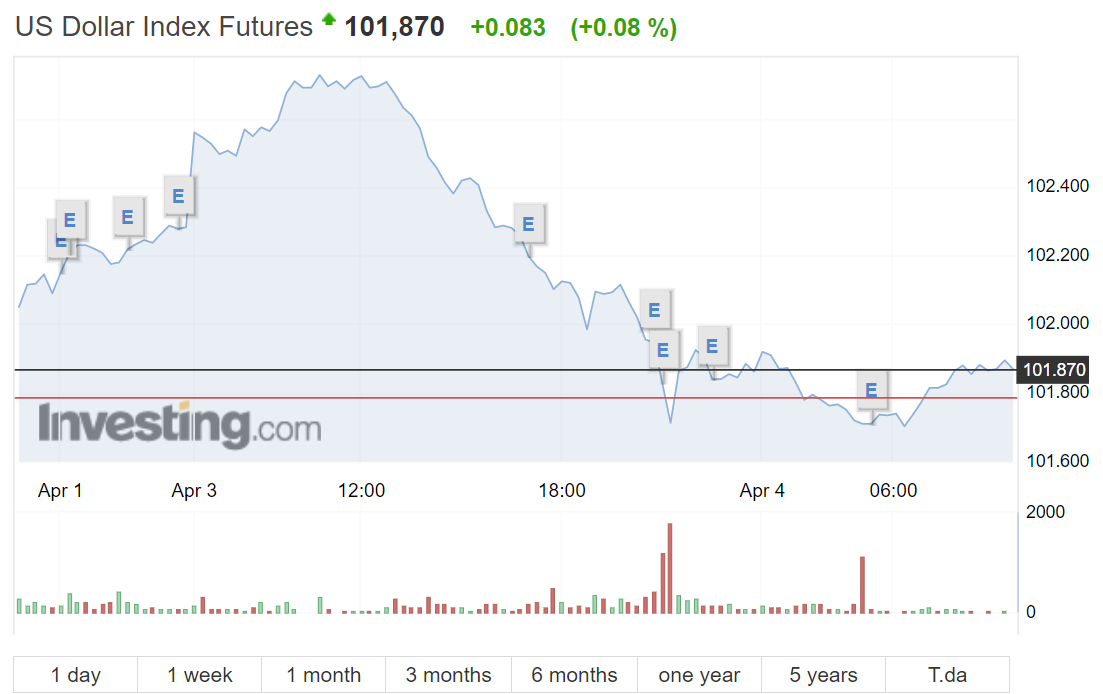The US dollar’s slide is about to start?
Many financial experts forecast that the US dollar could go down strongly over the long term. This being said, the Standard Bank remains reticent to believe that a significant slide is about to start.

There does seem to be a bias in the market to see dollar weakness over time
>> How will banking risks affect the US dollar?
As far as the Standard Bank can tell, its forecast for euro/dollar to be up at 1.20 in a year and 1.30 in two years, with similar dollar weakness against other currencies, is among the most bearish in the market. This being said, its shorter-term forecasts lie on the more bearish side of the consensus. In part, this reflects the usual problem that consensus forecasts usually do not see much variation from the current spot rate because bulls and bears tend to cancel each other out to some extent.
Despite this, there does seem to be a bias in the market to see dollar weakness over time; it is just that the median forecast on the Reuters survey is much lower than ours at around 1.12 or so, and even the range of forecasts lies below our 1-year call at 1.02 to 1.18.
The Standard Bank’s bias for a weaker dollar is built on many foundations. Of particular note is that the current environment of rising policy rates, economic weakness, high inflation, and asset price fragility should all reverse in time. As a result, global economic hopes and global financial confidence should all improve, and this tends to be an environment that’s more conducive to dollar weakness than the economic frailty and financial market nerves that dominate at the moment.
As we transition from one regime to the next, the US dollar should fall, and this regime change could be abrupt enough to produce quite a significant fall in the US dollar. The currency’s overvaluation comes into play here as well, as the dollar has been rising for the most part since 2011 and, even though there have been bouts of weakness from time to time, none have been able to significantly impact the dollar’s overvaluation.
Indeed, when we think about the dollar against many emerging market currencies, we can even argue that the case for justifiable dollar overvaluation is being undermined by the fact that the traditionally large inflation gap between most EM countries and the US has narrowed significantly as US prices have risen. Of course, this does not seem to matter too much when the global economy is strained and financial markets are weak, but in time, things may change.
>> Doubts about the US dollar's dominance
But if there are good arguments for a weaker dollar over time, why not just assume that the fall that started back in Q4 last year will continue from here? The Standard Bank is still reticent to give the all-clear for a significant dollar slide because the global economy is still not out of the woods, central banks have not finished tightening policy, and asset prices still seem vulnerable, particularly in light of the recent strains in the banking sector. In other words, a counter-trend rally in the dollar, even if modest, could still occur.

Movements of USD index
In theory at least, the "all clear" for a significant dollar slide seems likely when the Fed starts to make the case for lower rates, provided that this is accompanied by stability or strength in risk assets. If you believe that the Fed could start to lower rates before the end of this year, as priced into the market, then the dollar could start a more significant slide from the summer, assuming the Fed starts to make the case for policy easing in advance of its first rate cut.
However, this is all a little too soon. What’s more, if the Fed really does have to change policy this quickly, it is likely to be because the economy has tanked, and that could create the sort of risk-off environment and asset price weakness that lifts the dollar, even if it also implies lower Fed rates. But if, instead, the economy holds up reasonably well and the Fed can smoothly move towards an easier policy setting next year against the backdrop of recovering risky assets, the dollar should slide. Indeed, it could fall quite significantly in this environment, even if we hold off on giving the decline the green light for now.








